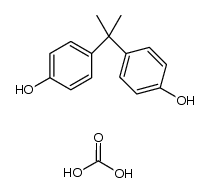Experimental myringoplasty.
L Feenstra, B W van der Ven, F E Kohn, J Feijen
Index: Int. J. Artif. Organs 3(6) , 354-7, (1980)
Full Text: HTML
Abstract
Artificial eardrums made from biodegradable poly(D,L-lactic acid), poly(glycolic acid) and poly(beta-benzyl-L-aspartate-co-L-leucine) 50/50, and made from the microporous poly(tetrafluoroethylene) and bisphenol-A poly(carbonate) membranes were implanted into the ear and as a reference subcutaneously in rats. The implants were histologically examined for periods up to one year. From the biodegradable polymers studied the poly(beta-benzyl-L-aspartate-co-L-leucine) 50/50 evoked the least tissue reaction and the newly formed tympanic membranes are the best in terms of thickness and overall integrity. The microporous poly(tetrafluoroethylene) membrane can be considered as a valuable support for the formation of a reinforced tympanic membrane.
Related Compounds
| Structure | Name/CAS No. | Molecular Formula | Articles |
|---|---|---|---|
 |
Bisphenol-A-polycarbonate
CAS:25037-45-0 |
(C15H16O2.CH2O3)x |
|
Release of bisphenol A from polycarbonate: a review.
2013-01-01 [Crit. Rev. Food Sci. Nutr 53(4) , 386-402, (2013)] |
|
Tubular or subsurface morphology of octabutoxyphthalocyanine...
2011-05-23 [Chemistry 17(22) , 6098-108, (2011)] |
|
Polycarbonate intraocular lenses.
1988-07-01 [J. Cataract Refract. Surg. 14(4) , 393-5, (1988)] |
|
Peptide microarrays on bisphenol A polycarbonate.
2009-01-01 [Methods Mol. Biol. 570 , 287-97, (2009)] |
|
A study on the effect of gamma radiation sterilization of po...
1987-01-01 [Biomed. Sci. Instrum. 23 , 149-53, (1987)] |